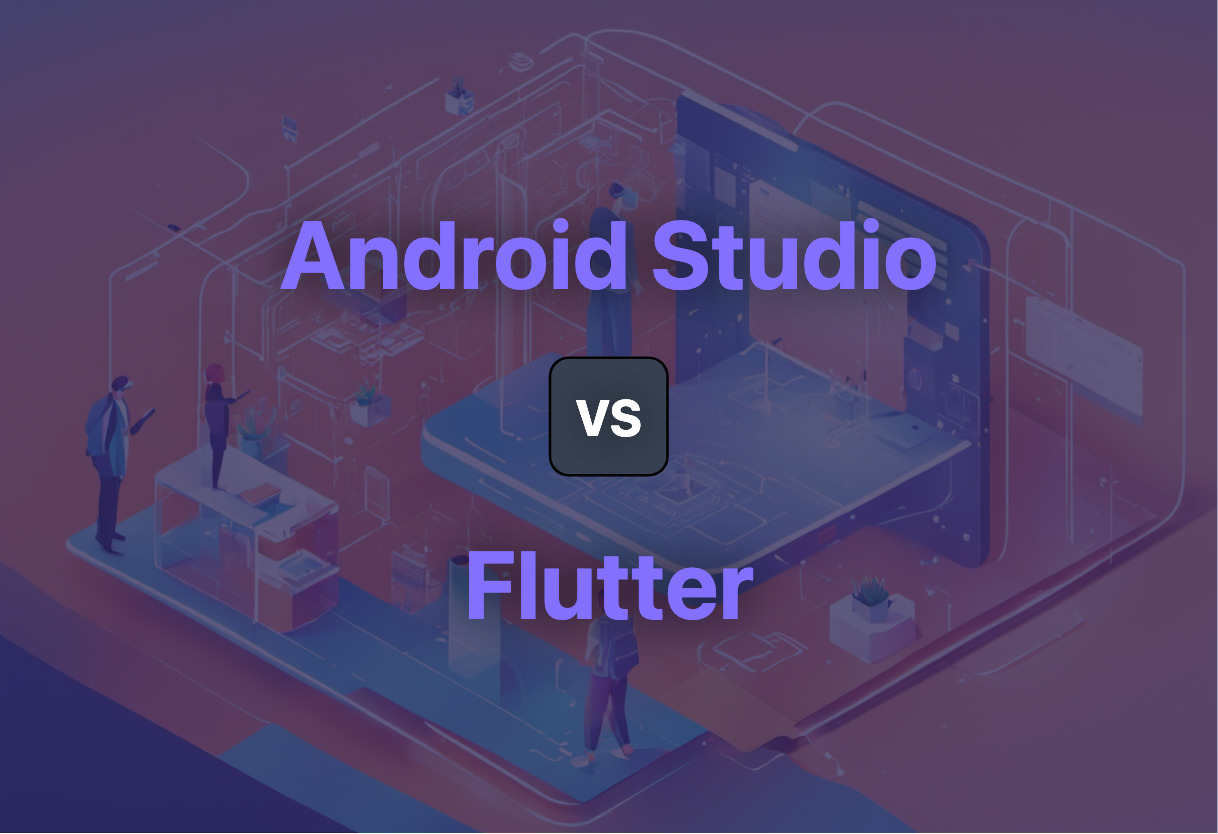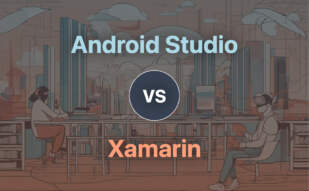For developers seeking versatility and speed, Flutter is the choice. It’s open-source, supports multiple platforms, and improves performance with the Dart language. However, Android Studio shines for those aiming for comprehensive Android development, with robust testing tools and Google Cloud integration. Deciding depends on your project goals.

Key Differences Between Android Studio and Flutter
- Coding Language: Android Studio uses languages like C++, Java, and Kotlin. Flutter is built with C, C++, and Dart.
- Platform Compatibility: Android Studio only supports Android development, whereas Flutter facilitates multi-platform development including Android, iOS, Linux, and more.
- Release Date: Android Studio was released in 2013. Flutter had its initial launch in 2017.
- Development Scope: Android Studio excels in robust, flexible Android-specific development. Flutter is open-source and supports versatile cross-platform development.
| Comparison | Android Studio | Flutter |
|---|---|---|
| Initial Release | May 16, 2013 | May, 2017 |
| Primary Language Used | Java, Kotlin | Dart |
| Multi-Platform Support | Android Devices | Android, iOS, Google Fuchsia, Web platform, Linux, macOS, and Windows |
| IDE Support | Self-contained | IntelliJ IDEA, Android Studio, Visual Studio Code, Emacs |
| Development Features | Code refactoring, static code analysis, Google Cloud integration, Android Virtual Device, extensive test tools, and lint tools | Large widget catalog, stateless/stateful widgets, ahead-of-time (AOT) compilation, improves existing capabilities, and focuses on streamlining integrations |
What Is Android Studio and Who’s It For?
Android Studio, the official IDE for Android app development, is the go-to platform for developers employing IntelliJ IDEA code editor and its toolkit. Exuding versatility with a flexible Gradle-based build system, it stands out with live edit capabilities for on-the-go composites update on both physical devices and emulators. It debuted on 16th May 2013 at Google I/O conference, replacing Eclipse Android Development Tools for native Android application development.
The platform is a haven for all Android device enthusiasts, offering powerful testing tools, extensive Github integration, and built-in support for Google Cloud Platform. Android Studio attracts developers with various language preferences, including C++, Java, Kotlin; emphasizing the ability to produce different APKs with overlapping features using identical modules, remains a highlighting fact.

Pros of Android Studio
- Swift, feature-rich emulator
- Enables live edit
- Facilitates GitHub integration
- Offers extension support for languages like C++, Java, Kotlin
- Enables creation of multiple APKs with different features
Cons of Android Studio
- Requires 8 GB RAM and storage
- Demands 1280 x 800 screen resolution
What Is Flutter and Who’s It For?
Google’s open-source UI software development kit, Flutter, has rapidly evolved since its inception in May 2017. Equipped with C, C++, and Dart under the hood, Flutter is a significant leap into cross-platform application development, rendering consistently impressive performance across Android, iOS, Web platforms, Linux, macOS, and Google Fuchsia.
Developers preferring robust performance have found their match in Flutter. Its pursuit of delivering rendering at 120 frames per second reflects in the framework’s constant upgrades, the most recent being Flutter 3.7 in January 2023. The entire Flutter experience gets further enhancement with a wide widget catalog and the ease of writing apps in Dart language.

Pros of Flutter
- Supports multiple platforms
- Consistent performance
- Large widget catalog
- Usage of Dart language for AOT compilation
Cons of Flutter
- Requires fluency in Dart language
- Dependent on third-party libraries for some functions
Code Examples for Android Studio & Flutter
Android Studio
This Android Studio code makes use of Retrofit, a type-safe HTTP client for Android and Java. The following snippet defines an interface for creating HTTP requests and maps the endpoints to methods. Before running this code, the Retrofit library must be included in your build.gradle file.
import retrofit2.Call;
import retrofit2.http.GET;
public interface DataRetriever {
@GET("example/endpoint")
Call<List<DataItem>> getDataItems();
}Flutter
This Flutter code snippet demonstrates how to create a card with rounded corners and a shadow effect. No additional dependencies are required in this case, as the Flutter SDK includes all necessary widgets by default.
Card(
shape: RoundedRectangleBorder(
borderRadius: BorderRadius.circular(15.0),
),
child: Column(
mainAxisSize: MainAxisSize.min,
children: <Widget>[
ListTile(
leading: Icon(Icons.album),
title: Text('Card Title'),
subtitle: Text('Card Subtitle'),
)
],
),
shadowColor: Colors.red,
elevation: 5.0,
)Remember, the proper Prism format must be used for the language descriptor to make the code easily readable in a blog post. Html, head or body tags are unnecessary and should not be included.
Decision Time | Flutter or Android Studio – Which Aces The Race?
As you grapple with the choice between Android Studio and Flutter, the fundamental criteria hinge upon your project requirements, development proficiency, and product goals.
Conventional Android App Developers
If you’re looking to satiate your traditional Android app development odyssey, Android Studio stands undisputed. It offers the complete package: a robust IntelliJ IDEA based code editor, pliable Gradle build system, speedy emulator, and a plethora of testing + development tools.
PIt’s GitHub integration and code template assimilation further simplify the development process. If you’re rooting for C++, NDK, Google Cloud integration, or highly customized build-process, Android Studio is your go-to.
Plus, its dominance in smart editing and advanced code refactoring is quintessential for high-quality app creation.

App Developers Seeking Multi-platform Compatibility
For developers aiming to build applications compatible with multiple platforms, Flutter takes the cake. Its use of the Dart language supplemented by C and C++, broad widget catalogue, and the ability to deliver steady 120fps rendering sets it apart.
With integrated support for Android, iOS, web, Linux, macOS and Windows, Flutter ensures your app reaches a wider audience without compromising on performance or aesthetics. Plus, the thriving third-party package ecosystem enhances development efficiency substantially.

Developers Focused on PERFORMANCE OPTIMIZATION
For those with a relentless pursuit of performance optimization, Flutter’s releases have consistently prioritized performance enhancements. Evident from their version 2.8 and 1.17.0 release which saw a marked ~50% rise in performance on iOS devices. The ability of Flutter to ensure seamless UI transition on different platforms without losing performance is a valuable asset for any developer.

In the great duel of Android Studio vs Flutter, your choice boils down to needs and expertise. If traditional Android app development with robustness and comprehensive testing is your aim, Android Studio should be your pick. However, for cross-platform compatibility without trading off lightweight and performance, Flutter emerges victorious. Remember, the right tool doesn’t outrank the right application!
Hannah Stewart
Content writer @ Aircada, tech enthusiast, metaverse explorer, and coffee addict. Weaving stories in digital realms.





